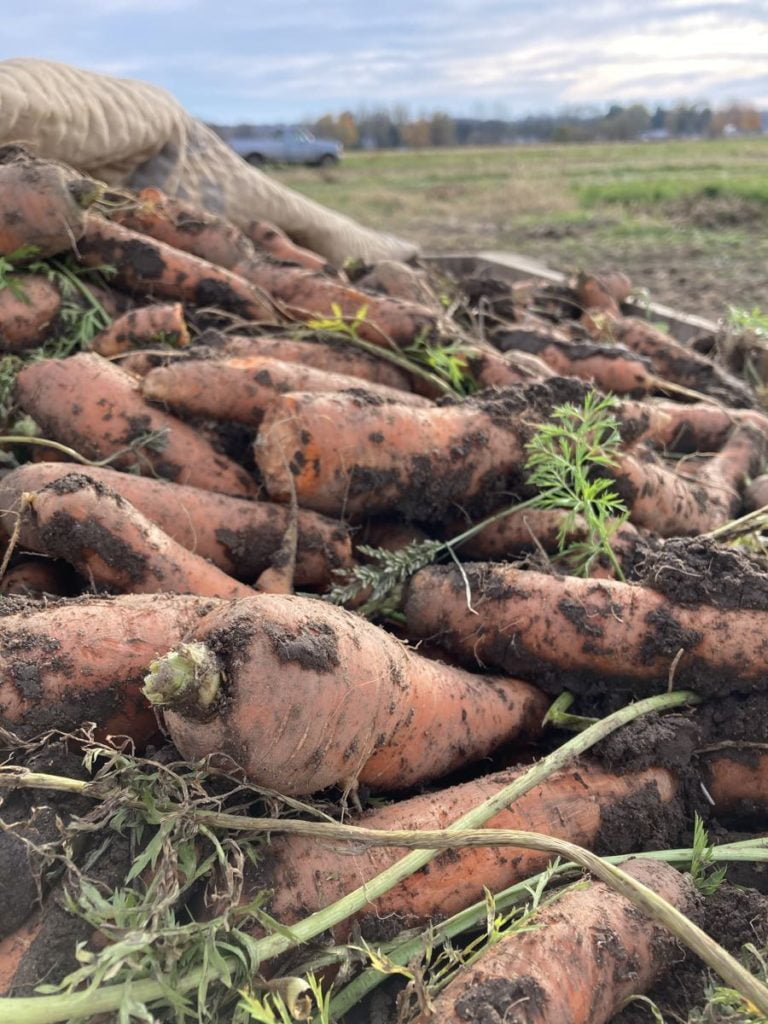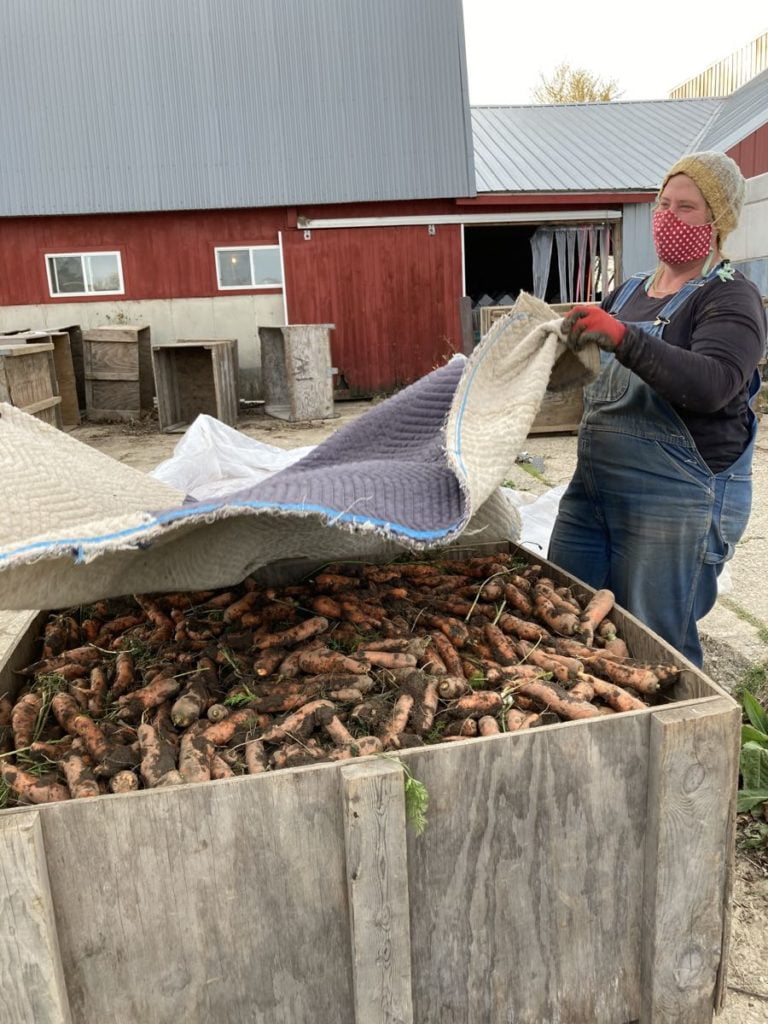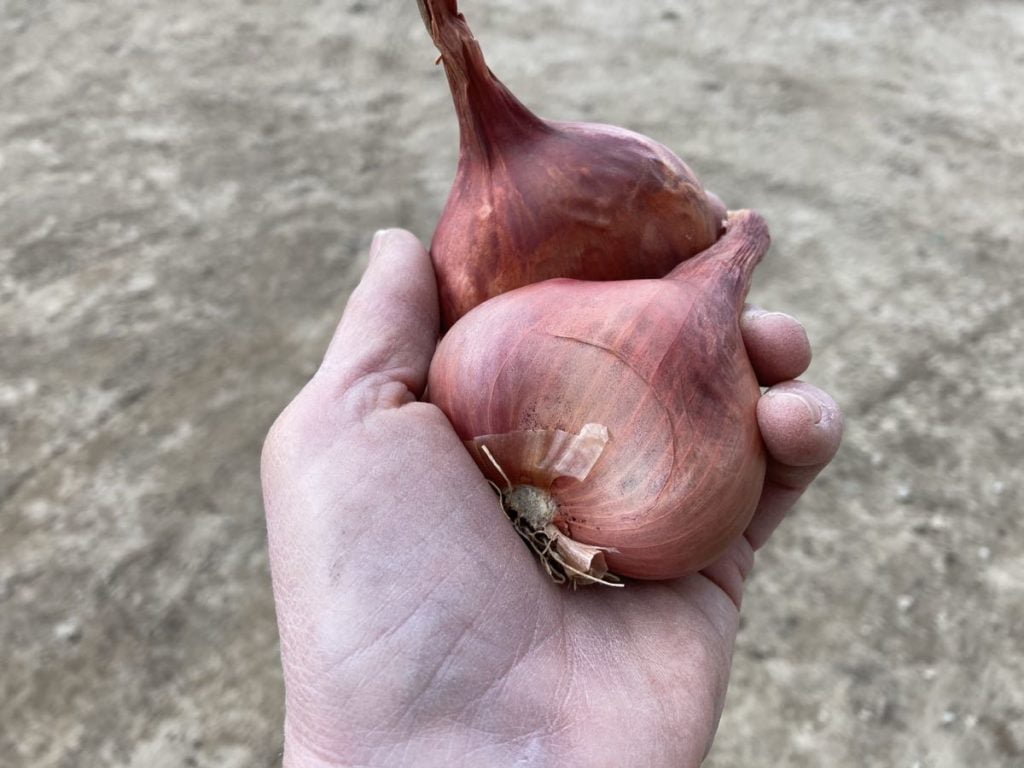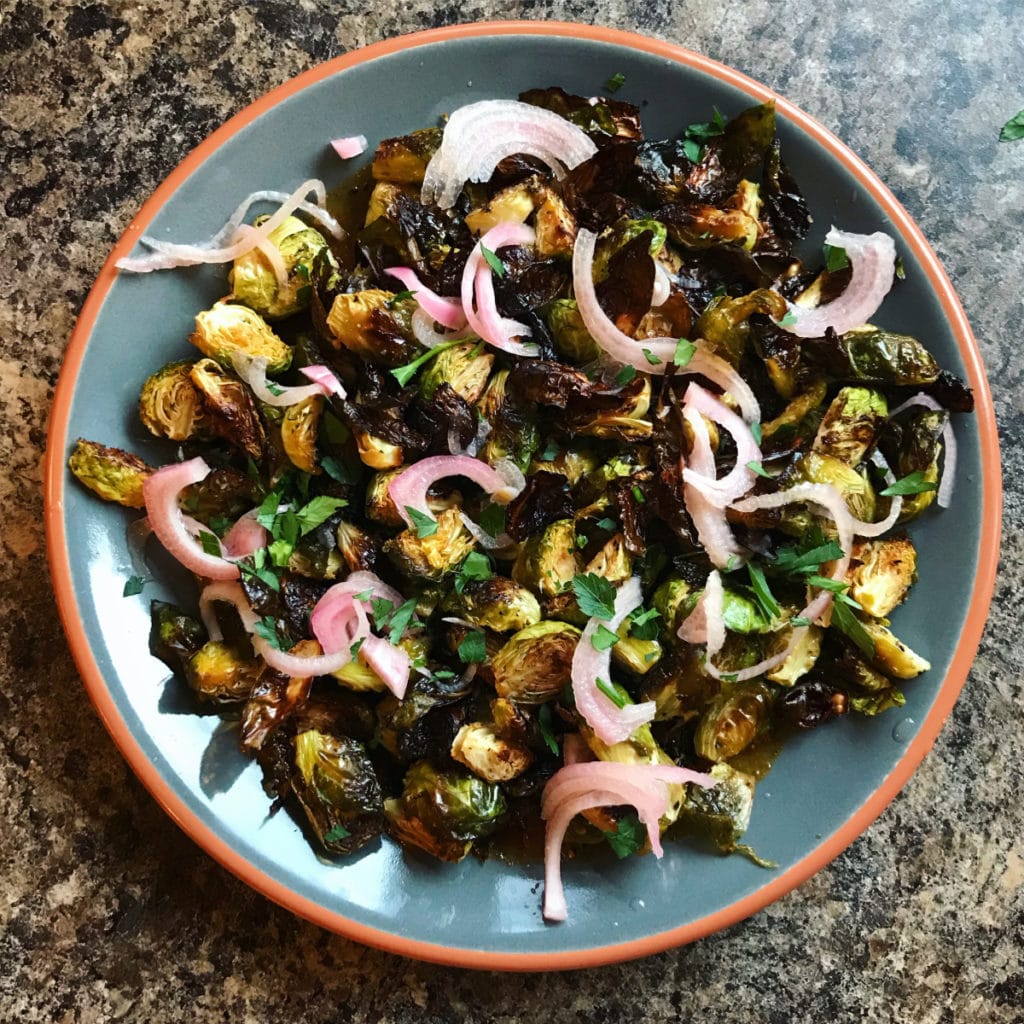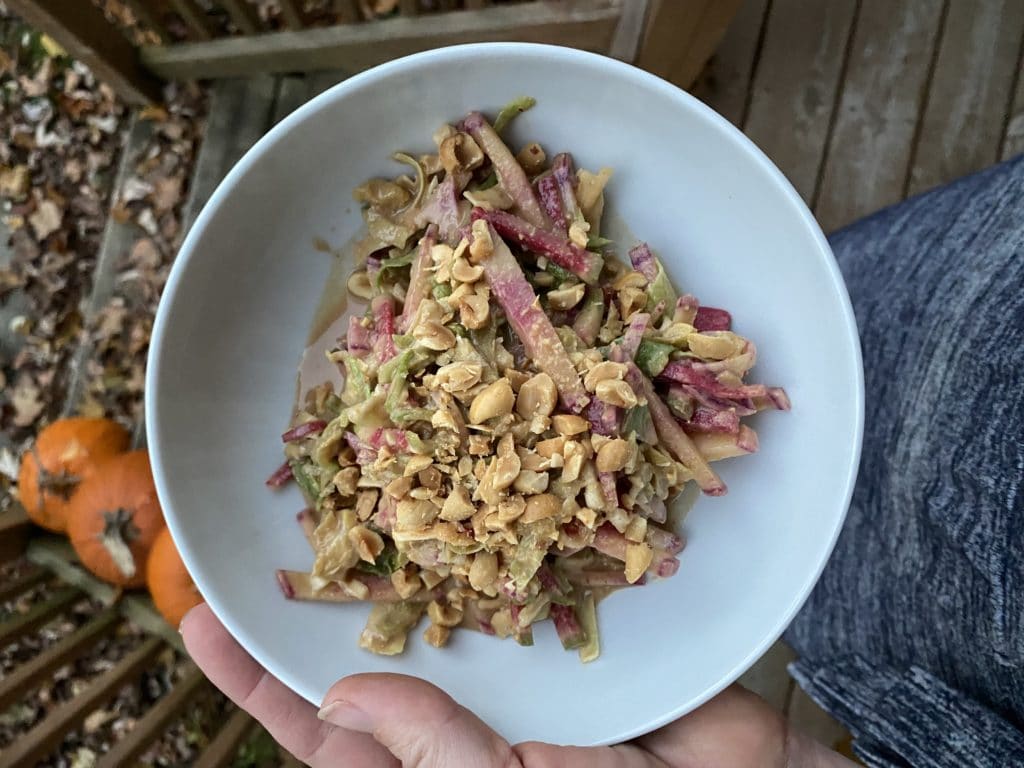Week #24, Final weekly & purple & moon; Thank you!
- On: October 28, 2020
 1
1
Good-bye … for now.
Tipi CSA members, thank you so much for joining our CSA adventure this season. We greatly appreciate your patience and your support. Your trust in us and messages of support carried us through some very difficult times. It meant so much to us.
In the midst of a complicated year, it was a pretty good growing season. Some things did well, some did poorly (that’s to be expected) but we did not struggle to fill your boxes. I asked our farmhands how they felt about work this year. Here are some of their responses:
“We all learned something about perseverance. The world was scary and sad but we just plodded on and dealt with it every day.”
“Making our COVID systems work was easier than I expected. I am proud of that,” from Karen, our Assistant Food Safety Manager.
“Really good crop year.”
“This was our best crew ever!”
“We are lucky to have a community to work with, in a safe way. I feel bad for people who have to work in isolation at home.”
What we saw was a team of workers who knit themselves together in a way that we have not seen in the past. There have always been strong friendships among our crew but this year people were more patient, more gentle with each other. Our time together became a respite. In the midst of a complicated and tense world, our work remained meaningful and ‘normal.’ As one crew member told me, “the farm rhythms gave me a sense of normalcy in the midst of everything else. Planting, seeding, transplanting – these jobs were the same as any year. It was comforting.”
We are grateful that our farmwork could proceed, that no workers got sick, and that we were able to feed all of you without interruption. We feel great relief as each storage crop is harvested and tucked away for winter. Wow, we are relieved that this season is almost over. Thank you again for your faith in us.
Beth & Steve
2021 CSA registration
We need to complete and analyze the season, then we will be ready to open registration for next season. I expect to do this earlier than other years, probably in November or December. Folks, I will be honest. We expect demand to be very high for CSA shares in 2021. If you want to join us again next year in the Madison to Janesville areas (please do!) then I advise you to register promptly. Our CSA shares sold out early this year, and we are getting unprecedented interest for next season.
1. I will open registration first for all returning members, so you have first dibs. Please watch for emails from us.
2. After one week, we’ll open to our waiting list.
3. After that, I’ll open registration to the public.
Winter sales
As usual, you can find our storage crops for sale through the winter at the Willy Street Coops, Basics Coop, and Outpost Natural Foods. We’ve got nice supplies of carrots, cabbage, parsnips, beets, celeriac, radishes, and rutabaga. We expect deliveries to last through March.
Final harvests
We are working hard to bring in our final root harvests. Carrots, parsnips, and some cabbages are still in the field. The weather forecast is excellent for the next ten days. We plan to have everything harvested by the end of that ten days. We will have to hustle but will make it happen. Our coolers will be filled to the brim and we will relax for winter.
Veggie List & Veggie Notes
Week #24, October 29/30, 2020
FINAL DELIVERY OF OUR REGULAR CSA SEASON.
– Weekly shares
– EOW/ purple
– Sampler/ moon
Red cabbage
Sweet potatoes, ~2.5 lb
Winter squash (Autumn Frost or a butternut)
Satina yellow potatoes, 3.5 lb
Brussels sprouts, ~1 lb
Celeriac
Japanese daikon radish
Snack peppers or a green bell pepper
Roulette chiles (not-hot habanero), a few
Poblano chiles (low or medium heat), 2
Yellow onion
Shallots, a few
Most sites get a bag of tender Amara kale. One or two sites get cauliflower or broccoli.
Red cabbage – Refrigerate. Stores well. Wonderful for colorful slaws.
Sweet potatoes – Store at room temperature. Sweet potatoes will suffer chilling injury in the fridge. It’s OK to either store in a paper bag, or out on your kitchen counter. Do not store in plastic. Sweet potatoes will store for a long time.
This week, some folks get our ‘Beauregard’ variety, some get ‘Orleans’. Both are orange-skinned.
– For best flavor, cook your sweet potatoes so they brown and caramelize. We have a simple, favorite way to roast sweet potatoes. We used to prepare sweet potato fries in the oven. Now we just quarter the potatoes, rub with olive oil, dust with salt and place cut-side-down on a cookie sheet. Roast in a 450 F oven without turning until soft. The flavors will caramelize (like sweet potato fries) but preparation is simpler and the cooking time less exacting. Slender sweet potato fries go from undercooked to overcooked in the blink of an eye. Larger slices are less exacting, and therefore are easier. Small sweet potatoes can be cut just in half. Jumbos will need to be chopped into pieces. Otherwise, they take a long time to cook.
– This first batch of sweet potatoes will need slightly longer cooking than ones from the supermarket, perhaps because they contain higher moisture so soon after harvest.
– Sweet potatoes are good at any size. We have cooked everything from tiny to jumbo and consistently find that all sizes taste good.
Winter squash – Store at room temperature, or above 55 degrees. Do not cover. You want good air movement to prevent spoilage.
This week, you will receive a small frosted squash (‘Autumn Frost’ or ‘Koginut’) or ‘Nutterbutter’ butternut.
The beautiful frosted squash have both pumpkin and butternut squash breeding in them. They cook and taste like an unusually good butternut. The seed companies tell us that they store very well, but I encourage you to eat them within a few weeks. These are new for us, so we don’t really know how well they will store.
‘Nutterbutter’ is our best-tasting butternut squash at this time of year. These are not intended for long storage. Eat within two weeks.
Satina yellow potatoes – These are from our friends Brad and Brian Igl’s farm near Antigo. Store dry at room temperature, in the paper bag to protect from light. These are good all-purpose potatoes. They roast very nicely.
Brussels sprouts – Refrigerate in the plastic bag. Eat within two or three weeks. They store well but the outer leaves will turn yellow. Don’t let them get too wet in the fridge.
Celeriac (knobby, round, bizarre-looking vegetable which smells like celery) – Refrigerate. Celeriac will store in your refrigerator for months. Cut off chunks as you need them. Peel before using. Flavorful celeriac is good raw or cooked. It is excellent in mixed roasted veggies or in soup. It’s especially good in cream soups, alone or mixed with potatoes. Grated raw celeriac is a great starting point for winter salads.
Japanese daikon radishes (long, white, freckled) – Refrigerate. Slice thinly and add to salads, cook lightly in mixed vegetable medleys or cut into matchsticks and add to pasta salads. Three weeks ago, we packed Korean radishes. While somewhat different, you can largely interchange Japanese and Korean daikon in recipes. Visit the Maangchi website (my favorite!) for many recipes for both Japanese radish and for Korean radish.
Green bell or snack peppers – Refrigerate. Eat soon. These were protected under row cover but exposed to cold nights, which shortens their storage life. Eat within 5 days.
‘Roulette’ chiles (small, orange or red) – This chile has been bred to have the aromatic taste of habanero chiles, with almost no heat. Snack on them to enjoy their flavor, or add them to any dish. To reduce all chances of spiciness, remove the seeds and midveins.
Poblano (dark green or red, shiny, triangular) – Refrigerate. Eat soon. These were protected under row cover but exposed to cold nights, which shortens their storage life. Eat within 10 days. These chiles have mild heat and lots of flavor.
Shallots (look like small red onions) – Store at room temperature. Shallots store for a long time. Excellent minced for salad dressing. They will sweeten considerably when fried.
Fried shallots – Thinly slice shallots. Heat 2 Tbsp peanut oil in a small skillet over medium-low heat. Add shallots and fry gently, mixing occasionally, until golden brown. When done, use the shallots and oil to top any dish, eg turkey salad.
Amara kale (tender, ruffled kale in bag) – Cover and refrigerate. This harvest is quite young and tender. Should be good for one week.
We’ve grown this variety just a few times. Here’s the seed catalog description: “While technically a mustard, Amara is known by several different names including Ethiopian kale, highland kale, Abyssinian mustard, and Texsel greens. The attractive, dark green leaves are tender, slightly savoyed with a wavy margin, and have an excellent rich flavor. Good in salads or as a cooked green.” This stuff is pretty interesting. It has the texture of kale but the spiciness of mustard. I’d say it’s about half as spicy as mustard greens.
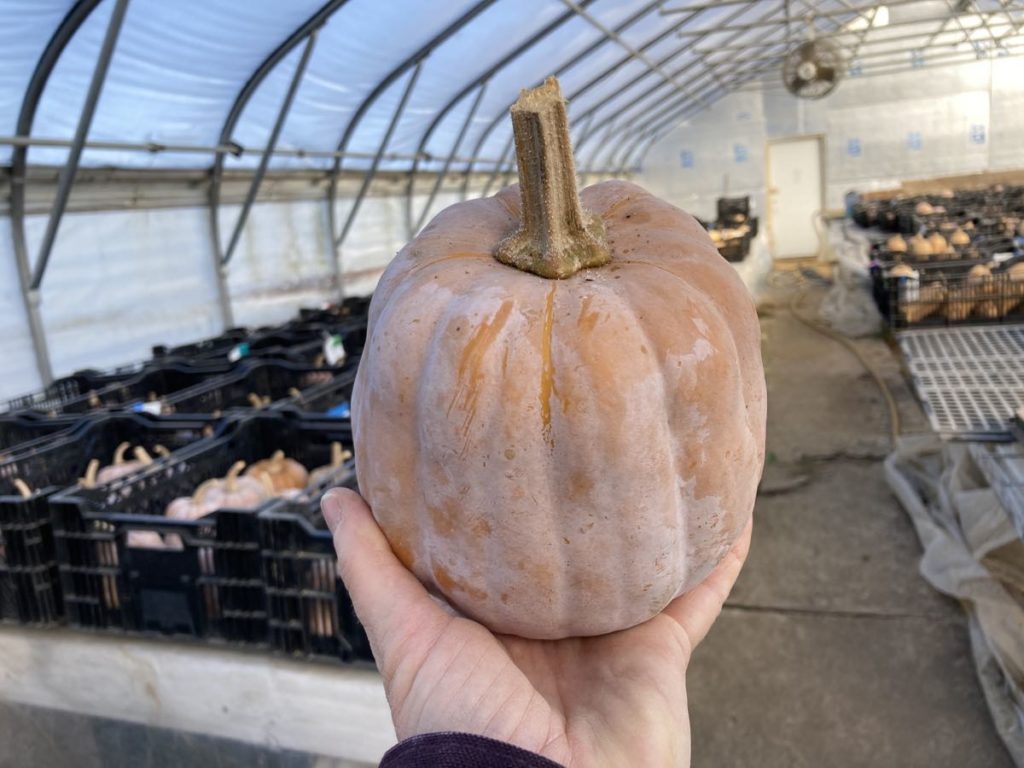
‘Autumn Frost’ or ‘Koginut’ squash.
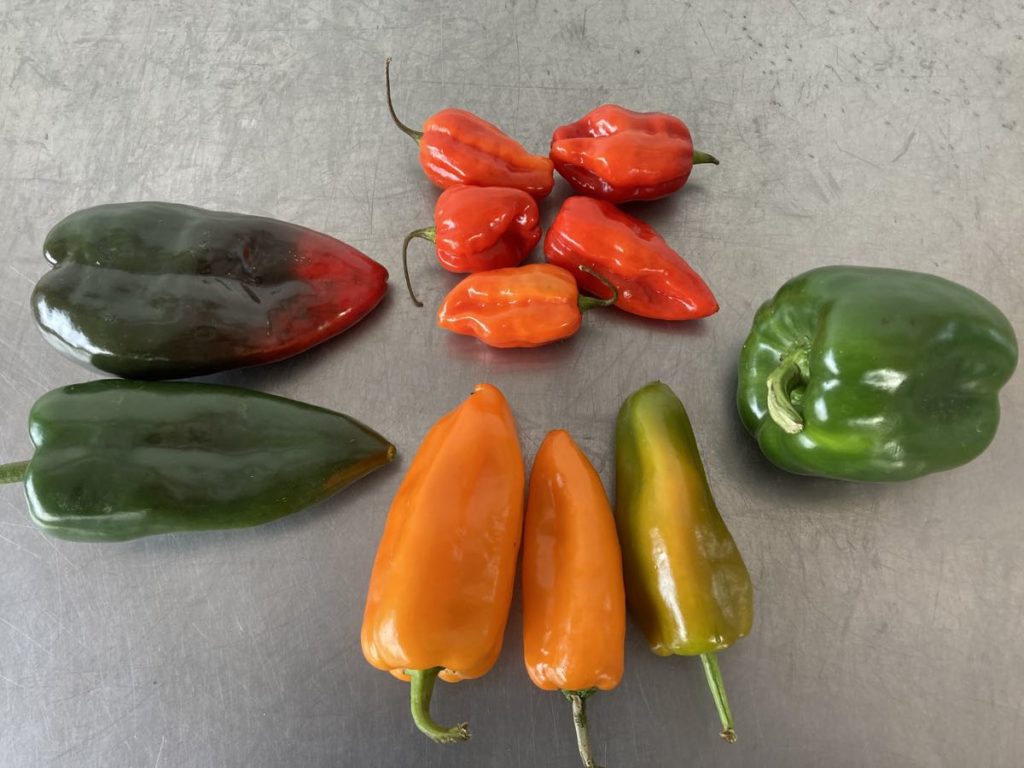
Pepper ID. You will receive some (but not all of these types). Clockwise from left,
Poblano chiles (dark green or red, shiny, triangular) – medium heat
Roulette (small, bright red or orange) – sweet and flavorful
Green bell pepper – sweet
Orano snack peppers (orange, red, yellow or green) – sweet
RECIPES
Visit our 2020 Recipe Log or our 2019 Recipe Log or join our Facebook discussion group.
LOCAL THYME/ Cooking 101
Brussels Sprout Red Cabbage Slaw with Honey Poppy Seed Dressing
Irish White Bean and Root Vegetable Stew
Pot Roast over Egg Noodles
LOCAL THYME/ Cooking 202
Braised Red Cabbage With Apples, Bacon and Wine
Dijon Braised Brussels Sprouts
Celeriac Potato Hash Browns with Jalapeño and Cheddar
LOCAL THYME/ Quick & Easy Meal
Fusilli with Brussels Sprouts in Cheese Sauce
RECIPES FROM LAUREN
.
????
.
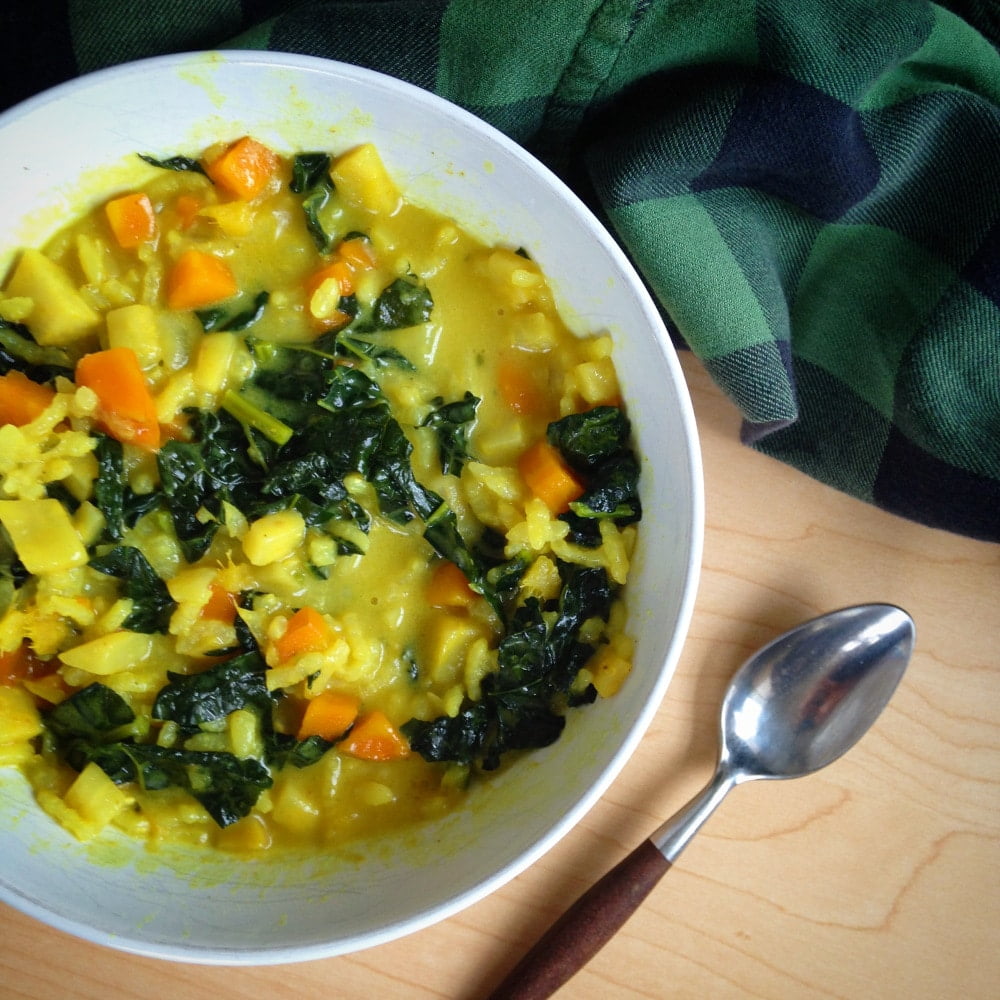
Takes 40 minutes
.

